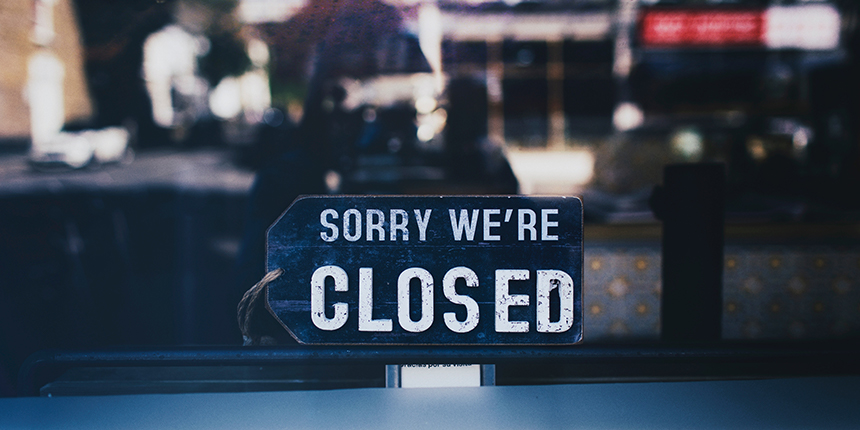Maintaining optimal listings on Google is an ongoing process. Data decays over time—that’s why it’s so important to keep an eye on your listings to make sure they don’t deteriorate. It’s also a sad fact that sometimes you need to watch out for spam and your competitors intentionally vandalising your business.
Competitors have been known to make edits in bad faith and intentionally making sure they fly under the radar. Reporting dashboards and agency partners like DAC can help detect some of these problems but due to the malicious nature of the edits, they can be hard to automatically detect. There are some weaknesses in Google My Business that business owners should themselves keep on the lookout for.
GMB vulnerabilities
- Uploading inappropriate or unflattering photos
- Answering customers GMB Q&A incorrectly or deceptively
- Asking unflattering GMB Questions
- Suggesting an edit to an “opening date”
- Suggesting edits to the business information erroneously
- Providing incorrect “Know this Place” answers
- Moving the address pin to the wrong place
Review vulnerabilities
- Re-posting bad reviews or ratings
- Updating or adding to a bad review
- Posting 4-star reviews with the intent to lower overall ratings
- Posting reviews under a different competitor
- Submitting a “thumbs up” on negative reviews
- Flagging positive, valid reviews
Unwanted edits can be rectified with DAC’s curated data submissions and unflattering reviews will be aggregated along with all the others. There needs to be some human element however as software does not know the difference between spam and something genuine. Listing management is unfortunately not just a turnkey operation. All businesses should monitor their listings and work with their agency partners to detect any harmful edits before they do any damage to your brand.
Service area business update
A service area business is a business that might not have a physical shop. Instead, they move around to provide a service at a customer’s location. Examples could include plumbers or freelance makeup artists. Earlier this year, Google announced that they were offering an improved sign-up flow for service area businesses, although how businesses were to adapt to these changes was not totally clear. There are six main points to keep in mind while updating your service area business in 2019:
- Instead of having a checkbox to designate your GMB listing as a service area business, you now have the option to totally clear your address. This accomplishes the same thing as the box used before. Removing your address will turn your listing into a service area business. This will remove the directions icon, the maps pin, and the listing from the Google Maps API and hide your address from the public.
- When Google first rolled out the cleared addressed update, many service area businesses automatically had their address fields made blank. If this has happened to you, do not try and add it back. If you attempt to rectify the “missing” address, your listing will no longer be designated a service area business. You will have to change it right back and possibly cause a dip in your rankings.
- If you have a blank address, Google is still fully aware of where you are. You do not need to specify your work address to Google while Google keeps it hidden. Google will still know what address was used for the initial verification of your business.
- Your service area is no longer designated as a radius around your address. You now add a list of zip codes or cities. This will be a much more accurate measure of where you do business and relieve the headache some business’s felt when their service area did not fit in a perfect circle.
- Where you rank is still based on the address used for verification. While this is not an ideal situation for some businesses, it is still the metric that Google uses.
- If your business moves its address to something well outside of your previous service area, you will want to submit a new address for verification. As your rankings are based on your verification address, you do not want to be ranking in Pittsburg once you’ve moved to Philadelphia. Currently, the only way to change this is to type the address back into your listing and then after being verified, remove it to become a service area business once again. It’s not a good system for updating but it’s what you must do.
Wrong local listing data = lost sales
Listing management is far from a “set it and forget it” process. 60% of data goes bad within two years and the difficulty in maintaining it extrapolates the more locations you have. A recent study by the Local Search Association found some insightful statistics on what the average user does when they stumble upon inaccurate listing data.

70% of adults do internet research “every time” or “almost every time” before buying. For those that do this research, they become heavily dissuaded from shopping at a business with bad listing data.
- 15% would go to an alternative business
- 14% would look for a different business
- 12% would abandon their search for the business entirely
- 22% wouldn’t trust the source again
Remember that listings management is an ongoing process. The longer you go without curating your data, the more inaccuracies you will gain and the more customers you will lose.
All reviews are not created equal
As online review technology gets better and the most relevant reviews are displayed over the most recent, it has become more and more clear that not all reviews are created equal. Even two reviews both giving five stars won’t be looked at the same by today’s algorithms. Some websites like Facebook have even gone so far as to remove stars entirely and simply give a “recommended” or not.
If your business with a recent marketing campaign was able to generate dozens of five-star reviews with little substance, they won’t benefit your business as much as one with a well thought out body of text. This is made true by pushes on two different fronts. From the customer perspective, a review that simply gives a high rating with no context will not let the customer know what about the business was appealing. If they are interested in specific products or an aspect of your business, they will have no idea if that review was impacted by what they care about. Meanwhile, on the algorithm side, a sudden flood of high (or even low) rated customer reviews can be viewed as inauthentic and not be registered as a ranking factor.
Google has deemed the body of text in a review is as important as the star rating. As algorithm software gets better, it is only getting more effective at picking up keywords within reviews and displaying the most relevant ones to potential customers.
Why categories matter in local SEO
The categorisation is important in Google My Business as it is one of the main factors which Google uses to tie a user’s search intent to your business. Proper use of categories can give you a significant boost in ranking and as such should always be utilised. Some of the extensions in Google My Business are only available for certain categories, however. Menus and product links are only available for restaurants and retail brands. This means that if you want these features on your Google Business Profile, you will need to mark your business as a “restaurant” or “department store” for these fields to be available.
This can be simple for many businesses but for others where you cannot cleanly fit into a single category, it can cause issues. Ikea, for example, has a restaurant area but to activate menu listings, they would need to change their category to “restaurant”. For obvious reasons, Ikea would not want to be competing for rank positions as a place to eat rather than as a furniture store.
There is the option for both primary and secondary categories for your business but the primary hold significantly more ranking power. It is also important to consider how you will rank if your two potential categories are very different from each other. Conflicting categories can cause confusion and make you rank poorly for a wide range of searches rather than highly for more specific query. For instances such as these, it is much better to list the second category as a separate “nested location” instead.
Want to know more about how DAC can help your business with local listings? Get in touch with DAC!




